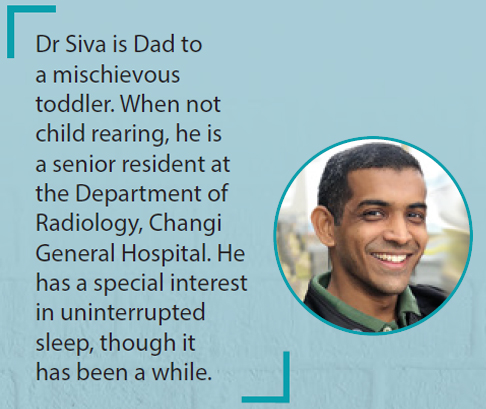The X-ray that saved his life
Chest X-ray. “21/M, RTA.” It was the second week of my first rotation in radiology. I feel sorry for this young man. I opened the electronic notes from the emergency department to find out more. He had gotten together with his buddies for one last night out before leaving for university in the UK. Despite having a few drinks too many, he decided to drive home. Ah, the folly of youth. Not noticing the lorry in his blind spot, he accelerated to overtake another car. His car hit the lorry and went into a tailspin before hitting the expressway divider. He’s lucky to be alive, really. Fortunately, he walked out of the car relatively unscathed. A series of trauma X-rays was ordered to confirm that there were no broken bones. What a shame – a black mark on his record for drunk driving! On first glance, the chest X-ray looked normal. I methodically went through my review areas before I spotted the abnormality – a single subtle undisplaced rib fracture! Good pick up!
Just as I was about to click “next”, something caught my eye. The mediastinal contour appeared a little lobulated. Mediastinal haematoma? Aortic injury? The aortic contour was normal. There was no pulmonary contusion or haemothorax. The findings don’t add up – better ask for a CT scan. That same afternoon, a CT chest scan was performed and revealed multiple enlarged mediastinal and hilar lymph nodes. The patient had lymphoma.
Moments like this are what radiologists live for – picking up an incidental early cancer and saving a life, putting disparate imaging findings together to clinch a rare diagnosis, or allaying the fears of an anxious patient by giving them a definite answer to what’s ailing them.
The secret lives of radiologists
Many people think of radiologists as court stenographers or uninspired journalists who simply report what they see. It is not a glamorous job – radiologists are rarely consulted on Grey’s Anatomy or House. Likewise, patients don’t see the radiologist’s role in their care – we don’t get many thank-you cards or cookies. To me, being a great radiologist is really about being a great doctor. We need to have a working knowledge of every organ system, the mental agility of an internist and the keen instincts of a surgeon. In many ways, radiologists act as the invisible force that propels patient care across the gamut of specialties.
To equip us for this challenge, we undergo five years of rigorous training, which includes rotations in diagnostic and interventional radiology. Each study we report as a resident is discussed with and vetted by a consultant who guides and teaches us. Our skills are further honed and tested during weekly tutorials, multidisciplinary rounds and, of course, examinations – which are tough and numerous. We are examined on a broad range of subjects, including anatomy and physics. Our final FRCR examination includes a rapid reporting component, during which we have 35 minutes to diagnose 30 X-rays, with a passing mark of 90%!
Compassion and coffee
Apart from examinations, night calls are the toughest challenge for radiology residents. There is a constant tussle between radiology and other departments on call when it comes to urgent scan requests. The radiology resident has to approve every CT, MRI and ultrasound scan performed while on call. As the resident on call has to report all the scans for the entire hospital, he/ she must be selective in accepting scans. We try to only accept scans that are likely to affect the patient’s management overnight. Our clinical colleagues who request for urgent scans often interpret our detailed cross-examination over the phone as a bid to block the scan. In reality, we are trying to triage the scan’s urgency and decide whether it can be performed during office hours, when there are more resources (CT and MRI scanners) and expertise (radiographers, sonographers and consultants) available to give the patient and referring team the best possible scan and report.
When we are inundated with nonurgent scans on call, we may only get to read scans with critical findings much later. Furthermore, the more scans we report, the less time we are able to spend on each, the more fatigued we become and overall, the more likely we are to miss important findings. Imagine putting all of your knowledge of anatomy, pathology, physics, pattern recognition and logical reasoning to the test multiple times a night, with only minutes to make a critical judgement call on each case. Though the physical demands of a night call in radiology are few (hey, it gets pretty cold sometimes), the mental stress on the resident is immense. On a busy call, a little compassion towards the radiologist can go a long way. (And a hand-delivered cup of hot coffee never hurts!)
Another way in which you can help us to help you is to provide relevant clinical information with each request. While there are no formal statistics on this, anecdotally the most common clinical indication for imaging across specialties is “.”. Clearly communicating the clinical picture and your differential diagnosis allows us to correctly protocol the scan, titrate our diagnostic sensitivity and tailor the report to the individual patient.
A new era of imaging
My hope is that radiologists and clinicians will continue to communicate with each other effectively to better understand our patients’ stories and provide them with the best of care. The story of the young man with lymphoma piqued my budding interest in radiology – I was fascinated by how the humble chest X-ray eventually saved his life. With the advent of high-end scanners, new imaging techniques and artificial intelligence, radiology is at the forefront of innovation in medicine. However, I believe that these advances will augment our practice rather than replace us, and that radiologists will always remain at the heart of medical imaging.
Clinical correlation is advised.

